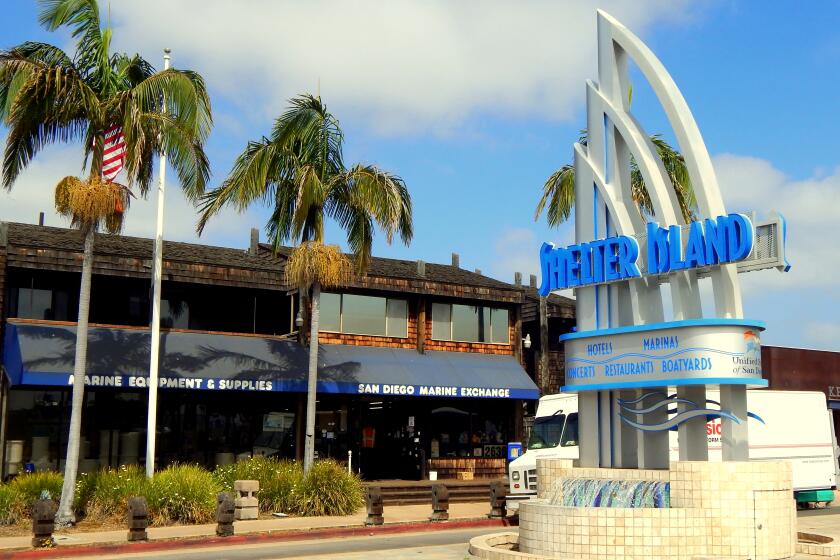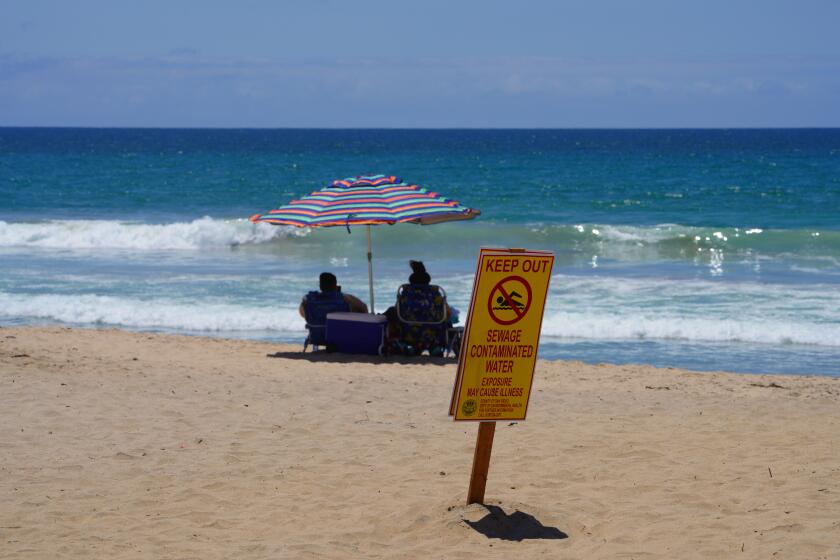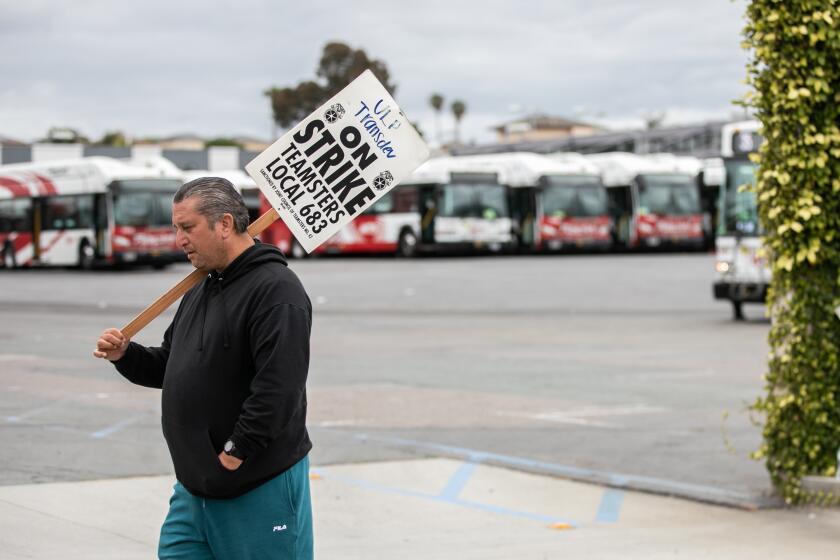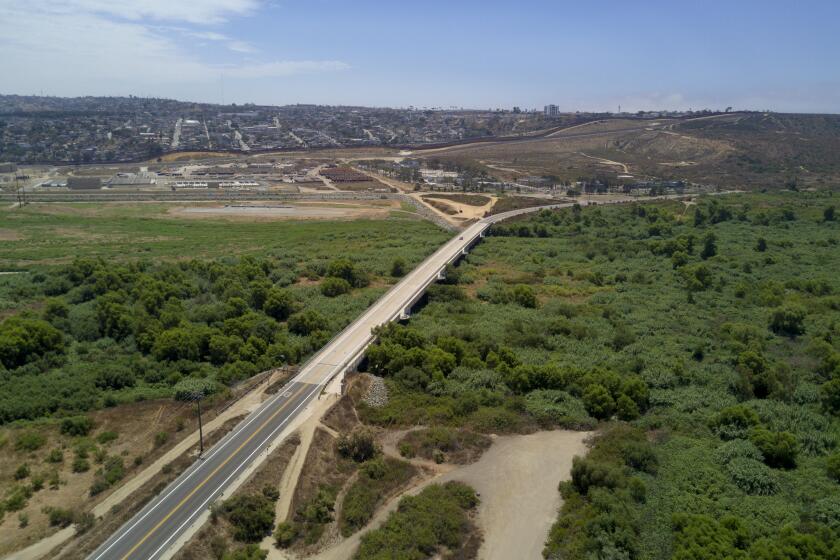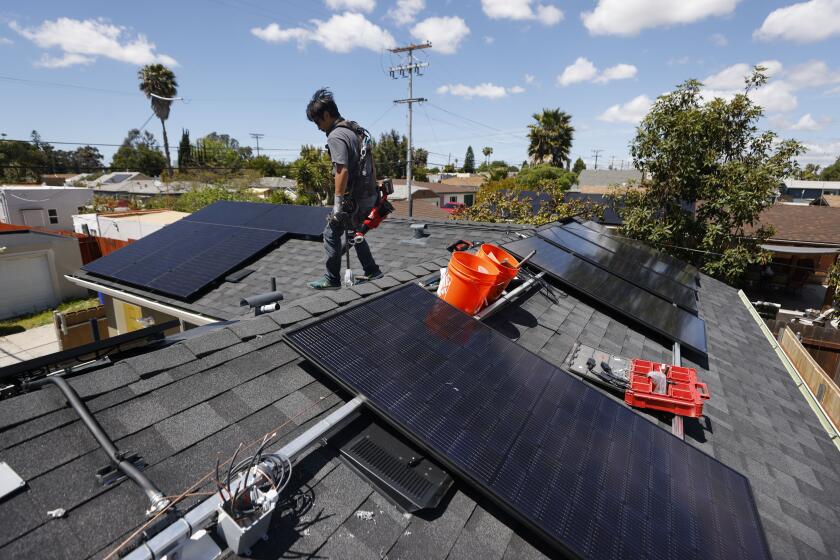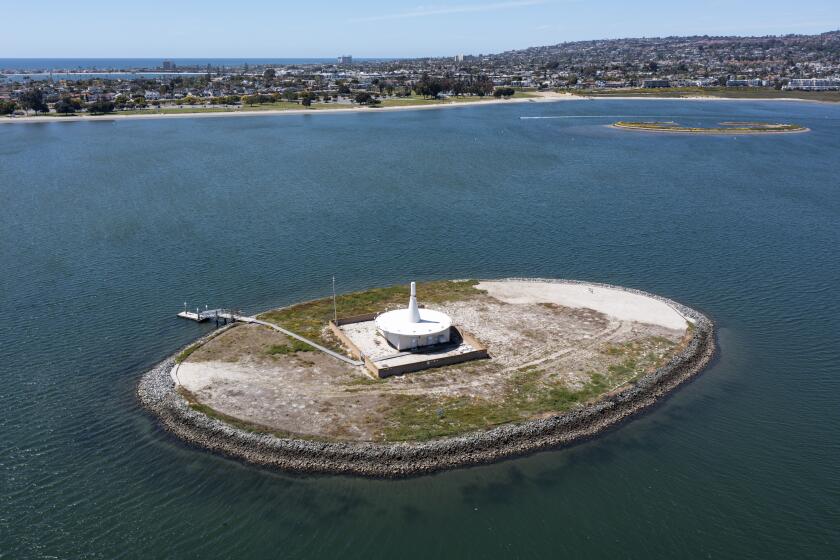Carbon Footprint: How Nicole Capretz became the climate-change maven of San Diego

Capretz has convinced nearly every city in the San Diego region to adopt a blueprint for reducing greenhouse gases
- Nicole Capretz household carbon Footprint: 43 tons of greenhouse gas a year. Living with her mother in the city of San Diego, their household footprint is 8 percent below the average for their Kensington neighborhood.
- The average carbon footprint for a person in the United States is about 18 tons of greenhouse gas a year, according to UC Berkeley’s CoolClimate Calculator.
Carbon Footprint
This article is part of an occasional profile series that looks at the amount of greenhouse gas generated by various lifestyles and how people are reacting to the worsening climate crisis.
Nicole Capretz is arguably the single most influential climate crusader in the San Diego region. Not only did she draft the city of San Diego’s nationally recognized Climate Action Plan — which calls for using all clean power by 2035— her nonprofit has succeeded in getting nearly every city in the county to draft a blueprint for capping climate pollution.
Poway is one of the last major holdouts, and Capretz, executive director of the small nonprofit Climate Action Campaign, is patiently waiting for the city to update its general plan. She has learned in recent years that overhauling the document opens up a municipality to lawsuits if elected leaders don’t simultaneously draft strategies to curb emissions in line with the state’s climate targets.
However, there’s one thing the 49-year-old has yet to accomplish — actually cutting greenhouse-gas emissions.
San Diego Mayor Kevin Faulconer adopted Capretz’s climate plan in 2015, but since then, emissions in the city have been roughly flat, with no measurable progress on the key goal of getting residents out of their cars and onto public transit.
The same can be said of Capretz herself, according to UC Berkeley’s CoolClimate Calculator. While she routinely bikes to work, owns a hybrid car, doesn’t eat meat and lives a modest lifestyle in a 800-square-foot home, her household carbon footprint is bigger than the average American.
“I honestly believe it’s the government’s responsibility to create the kind of cities that allow people to have a low-carbon lifestyle.”
— Climate Action Campaign Executive Director Nicole Capretz
That’s largely because she routinely flies to Sacramento for work and takes care of her 80-year-old mother, who requires a significant amount of costly medical attention.
Capretz said she was surprised at the size of her carbon footprint, but she argues that individual lifestyle choices are not going to save the planet.
“I honestly believe it’s the government’s responsibility to create the kind of cities that allow people to have a low-carbon lifestyle,” she said. “That’s why I’ve devoted my life to changing systems and power in the political environment.”
Southern California’s urban landscape, for example, makes it nearly impossible for people to cut their emissions, she said. “Our streets are designed for cars, so people don’t feel safe walking. People don’t feel safe riding their bikes. Public transportation? We haven’t made it cool, affordable or fast.”
Capretz and San Diego are not alone in regard to their carbon footprints. Planetary emissions continue to rise, and a recent report found that even California is not on track to meet its ambitious goals of cutting emissions 40 percent by 2030 and 80 percent by 2050.
Still, Capretz argues there’s reason for hope, at least in the San Diego region where cities are now, in a sense, rebelling against San Diego Gas & Electric.
The utility currently offers 45 percent renewable energy to its customers, and the state has called for using only green power by 2045.
However, that’s not fast enough for Capretz. The clean-energy advocate has successfully pushed cities to adopt what’s known as Community Choice Aggregation, a state-approved program that allows elected leaders to be even more aggressive in purchasing renewable energy and to invest in local solar, wind and other renewable energy projects using ratepayer dollars.
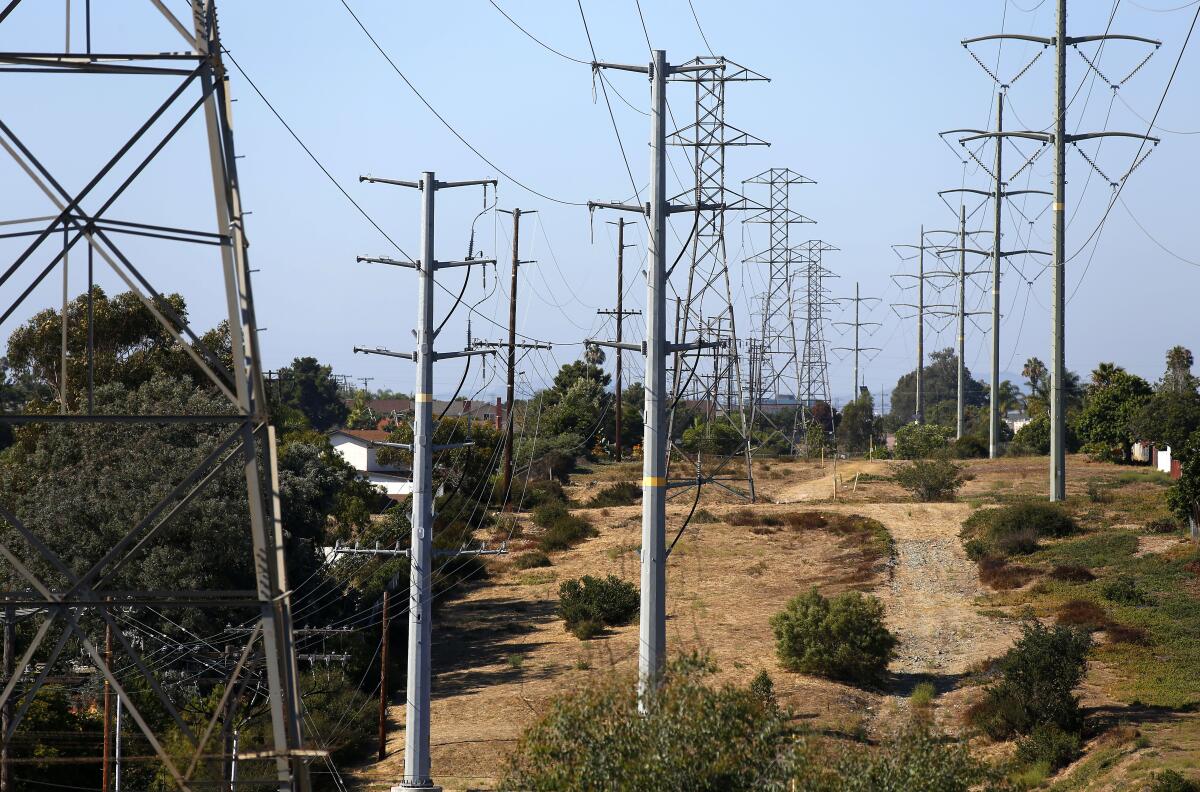
Under pressure from Capretz and her team of paid advocates, cities from Encinitas to Carlsbad to San Diego to Chula Vista, are now in the midst of forming regional community choice programs that would represent more than 70 percent of SDG&E’s current customer base. Under the program, a utility continues to maintain the electrical lines and poles that deliver power, but elected officials set rates and ink energy deals.
SDG&E’s parent company, Sempra Energy, formed a shareholder-funded lobbying group to slow down the adoption of CCA, but the effort proved largely ineffective.
“It used to be that SDG&E was the big dog, and now she’s proven that the power of one can really change the dynamic,” said Marcela Escobar Eck, a longtime San Diego government insider and planning expert. “Government’s run by the people that show up, and she shows up.”
In response to questions about Capretz’s influence on local politics, the utility provided this statement:
“SDG&E appreciates everyone, including Ms. Capretz, who is working passionately and urgently on solutions to combat climate change. Over the past decade, SDG&E has collaborated with local governments and many organizations throughout our region to achieve tangible greenhouse gas emission reductions.”
The early days
Capretz grew up in Newport Beach in the neighborhood of Corona del Mar, living in her words a “privileged” lifestyle. Her father was a successful attorney, who represented plaintiffs in product liability cases. Her mother stayed at home to raise her and her younger brother.
She was a straight-A student until she got to college at UC Santa Barbara, where she struggled to find inspiration. Frustrated with her poor grades, her father organized an internship for her in the summer of 1990 working in Washington D.C. with a team of lawyers and activists led by Ralph Nader.
“I got placed with this eccentric genius,” said Capretz. “I was way out of my league intellectually, but socially, I was like the most normal person there.”
Specifically, she worked with an attorney named Kenneth Bossong, focusing on clean energy issues.
“He schooled me on how the oil and gas industry was not only driving the world economy, but creating all the world’s problems, from national security to air pollution to economic inequality,” she said.
Capretz returned to UC Santa Barbara with a new-found passion, switching to environmentally focused classes and excelling academically. Her friends were a little shocked, especially when she signed up to go door-to-door advocating for the California Public Interest Research Group, better known as CalPIRG.
“She came back and jumped in with both feet,” said Kristine Puich, a lifelong friend of Capretz, who went to high school and college with her. “It was like all she could talk about. She never second guessed what she wanted to do from then on.”
After getting her bachelor’s degree, Capretz moved back to D.C. to continue her advocacy work. Eventually she graduated from Vermont Law School and passed the Bar Exam in California.
Going back to Cali
In her late 20s, she moved to San Diego to work for the nonprofit Environmental Health Coalition, focusing on clean air and water. That’s when she met Donna Frye, who was at the time advocating for cleaner beaches.
Capretz became so enamored with Frye, she left her job to help get her newfound environmental compatriot elected to the San Diego City Council.
That was 2001 when California was in the grips of its historic energy crisis, and Capretz wasted no time in pushing San Diego to embrace solar power, in large part driven by the idea of distancing the city from utility-scale power.
Reflecting on that time, Frye called Capretz “very passionate,” and added that she played a crucial role in shaping much of region’s environmental policy over the last two decades.
“She’s extremely persistent,” Frye said. “Change takes time, but it’s fair to say that without her, I don’t think we’d be anywhere near where we are today.”
Capretz would go back to working at the Environmental Health Coalition, but again found herself at City Hall after Assemblyman Todd Gloria, then serving on the City Council, took over as interim mayor in 2013 following the resignation of Bob Filner.
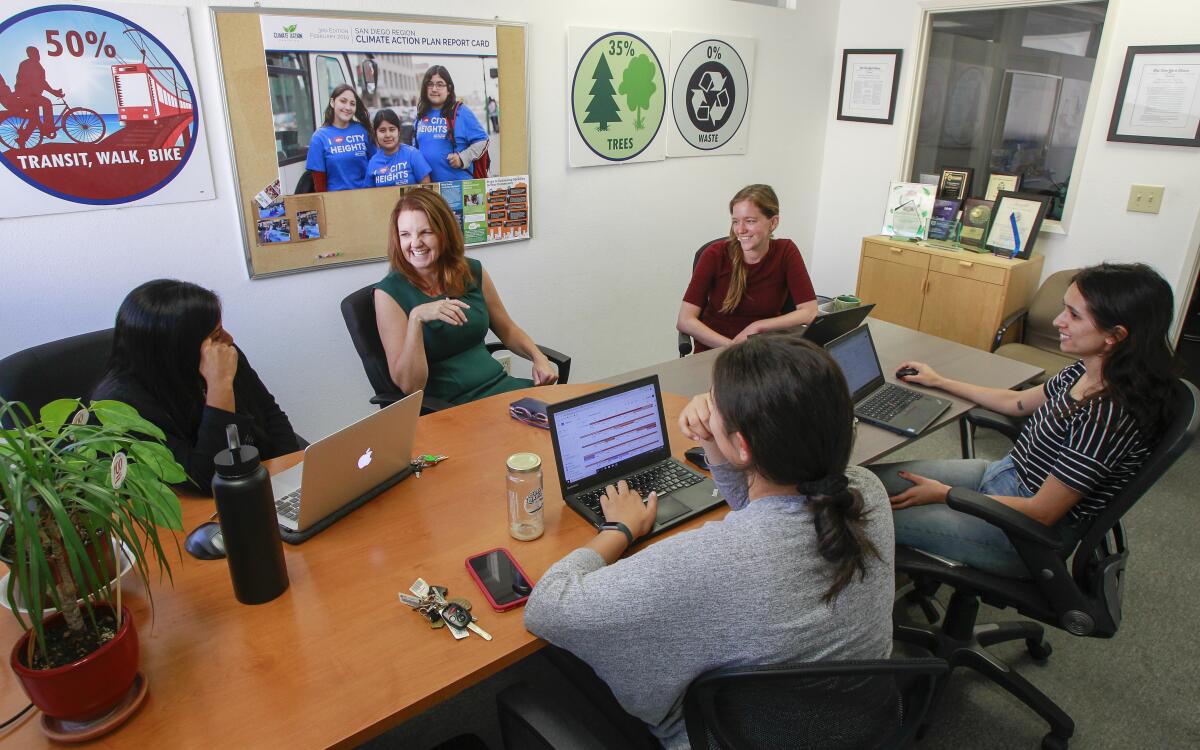
Planning to curb emissions
Gloria brought her on as director of environmental policy, specifically to draft an ambitious climate plan. Top officials cautioned against adopting a legally binding document that could land the city in court, but Gloria eventually sided with Capretz.
After Faulconer was elected mayor, Capretz launched her nonprofit to watchdog implementation of the climate blueprint she had developed. With just $150,000 in seed money, she and one other person launched the Climate Action Campaign.
By the time Faulconer adopted a final version of the plan in December 2015, Capretz had been hounding the mayor and talking to the press for months. To the surprise of many local activists, Faulconer adopted the plan largely as Capretz had written it.
However, Faulconer’s team set a 2020 goal for reducing emissions that the city had already achieved before the document was approved. The situation became clear to elected officials and advocates a year later when the city released its first progress report on the climate plan.
“I wasn’t privy to all the shenanigans that were happening — not shenanigans, but the new calculations,” Capretz said reflecting on the situation.
Over the next four years, Capretz grew her nonprofit to include seven full-time staff members and an annual budget of roughly $1 million. Her team painstakingly lobbied every city in the region, calling on elected officials to adopt climate plans and often threatening litigation.
“I knew this was someone really special,” Bruce Bekkar, a local obstetrician gynecologist who sits on the Climate Action Campaign board of directors, said of meeting Capretz. “Immediately, I was taken by her nearly encyclopedic knowledge of local politics. Then I watched her assemble this amazing coalition of not just environmental folks, but the faith community, businesses and unions.”
Climate Action Campaign has also pressured top transportation officials at the San Diego Association of Governments to pursue a more transit-focused vision for the region. She teamed up with organized labor to help defeat a SANDAG tax measure in 2016, known as Measure A, which she and others argued would undermine efforts to rein in greenhouse gases by widening freeways.
In a change of direction, SANDAG’s top leadership now wants to build a multi-billion-dollar high-speed rail system for the region, with Capretz and her team some of the loudest cheerleaders.
It’s far from guaranteed that this vision for expanding transit service or any of the other numerous climate plans adopted or being drafted around the region will come to fruition. The next decade of Capretz’s life could prove the most eventful and potentially challenging of her career.
Get Essential San Diego, weekday mornings
Get top headlines from the Union-Tribune in your inbox weekday mornings, including top news, local, sports, business, entertainment and opinion.
You may occasionally receive promotional content from the San Diego Union-Tribune.

